Hello dear friends good afternoon......
Start a beautiful day with beautiful insects. Today I found a hoverfly basking in the morning sun. His appearance was so fantastic that I immediately wanted to approach him. This hoverfly is one of the unique flies I have ever encountered. The shape and color of the body really resembles a bee. If we don't look closely we won't know if it's a fly, it looks a lot like a bee.
Luckily, this fly only has one pair of wings so it is easy to differentiate between a hoverfly and a bee. Meanwhile, bees themselves have two pairs of wings. Meanwhile, the color and pattern really resembles a bee, namely orange and black. Its entire body is also protected by soft fur whose color matches the color of its body.
Not only is the pattern on its body attractive, but the pattern on its two wings is also very beautiful. But this side is often overlooked because the pattern lines are too thin so it is difficult to see with the naked eye. Moreover, if the wings are transparent, only the shine is visible when exposed to sunlight.
And one more thing that differentiates between hoverflies and bees is their antennae. Hoverflies have short antennae with rounded tips, while bee antennae are long and slender.
Even though it closely resembles a bee, this hoverfly is not a stinging insect. That is one of the bonuses that this fly has. Safe to approach. But to photograph it, we have to keep our distance so that it doesn't fly away.
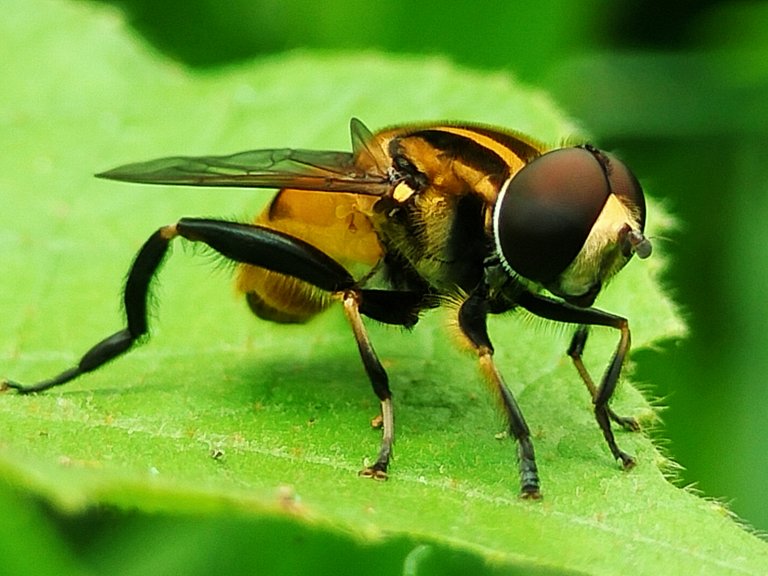
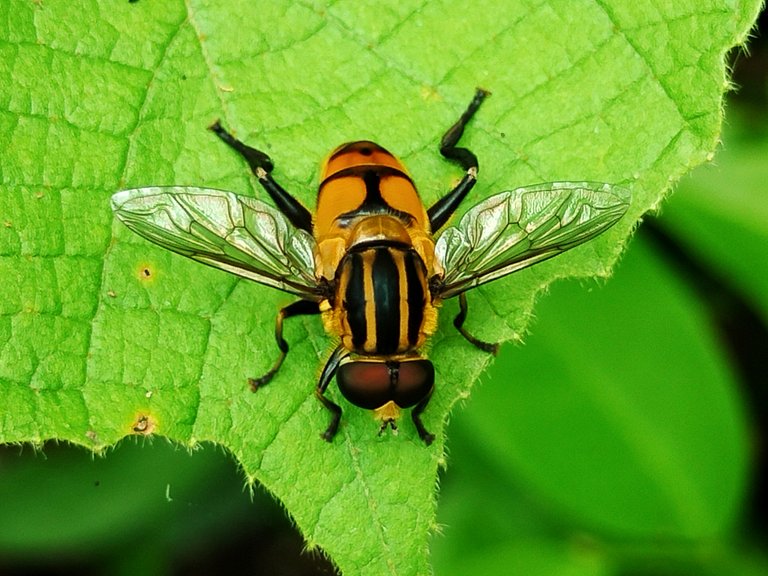
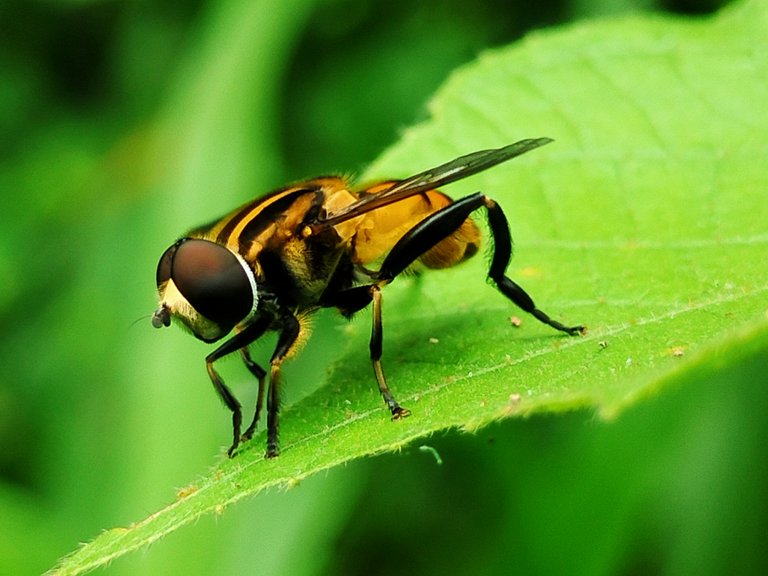
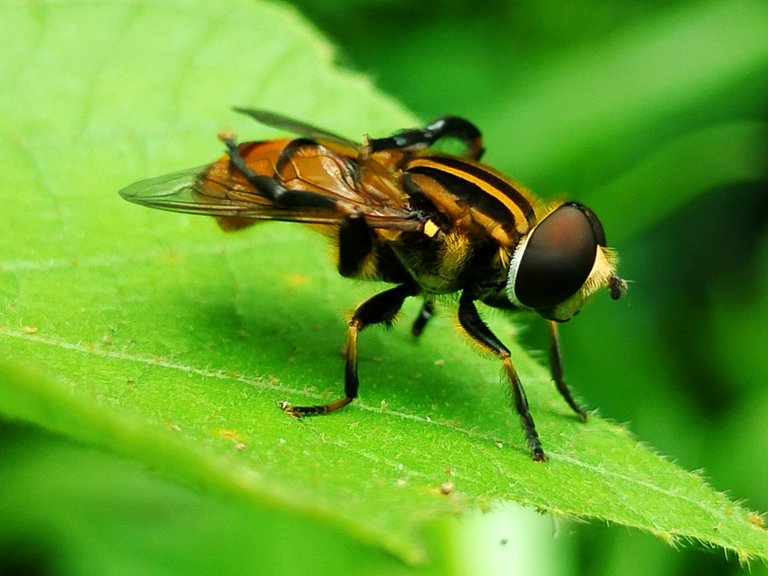
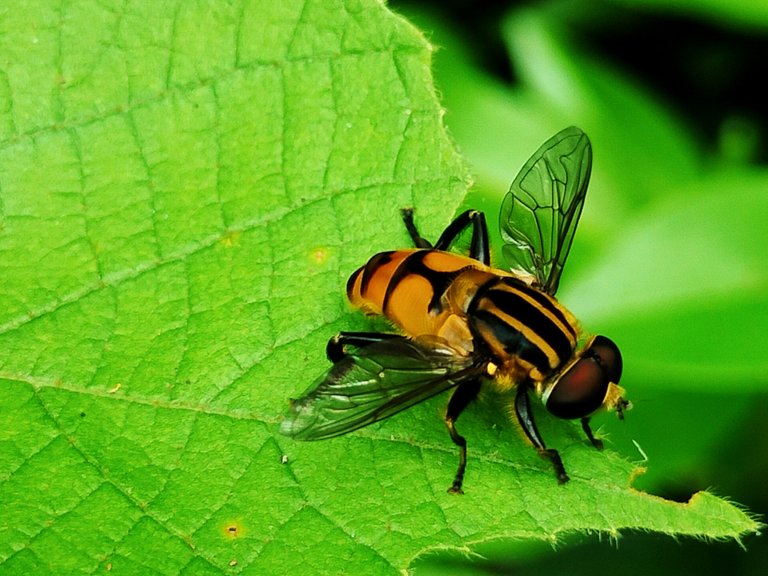
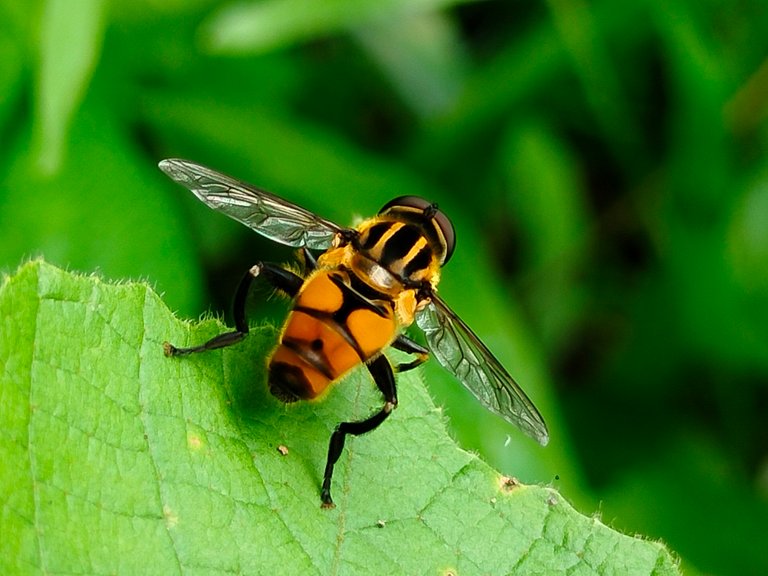
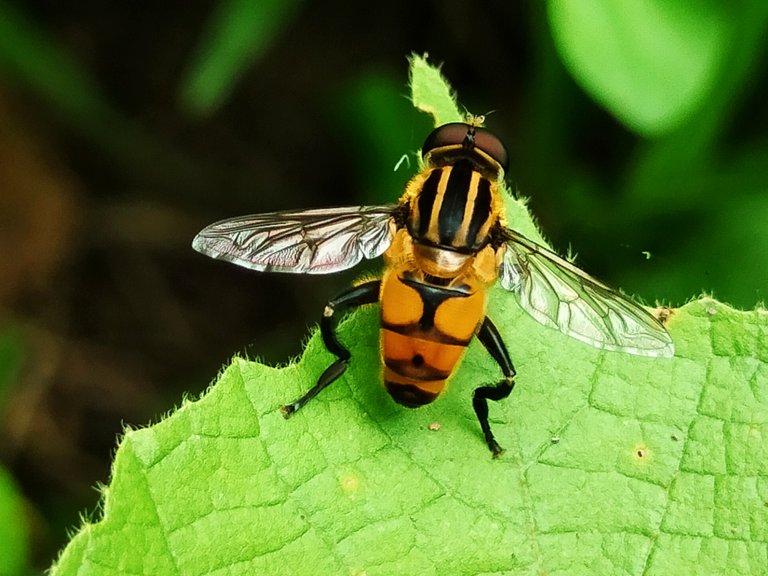
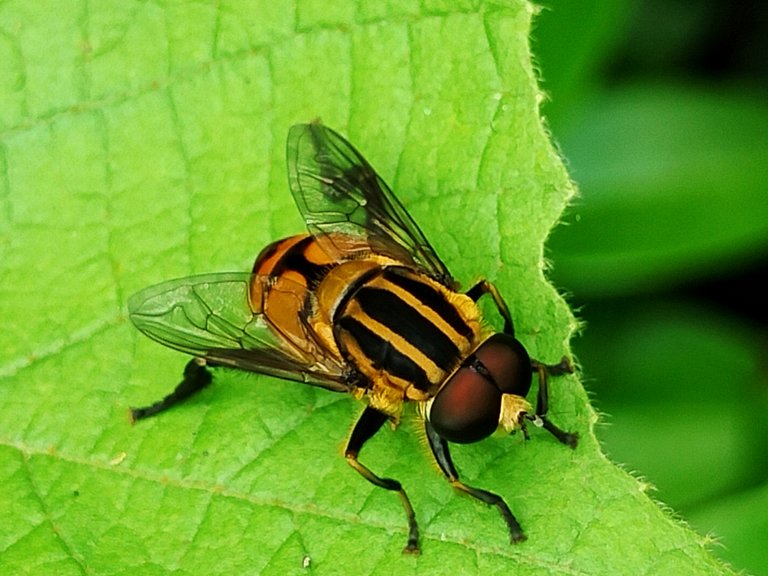
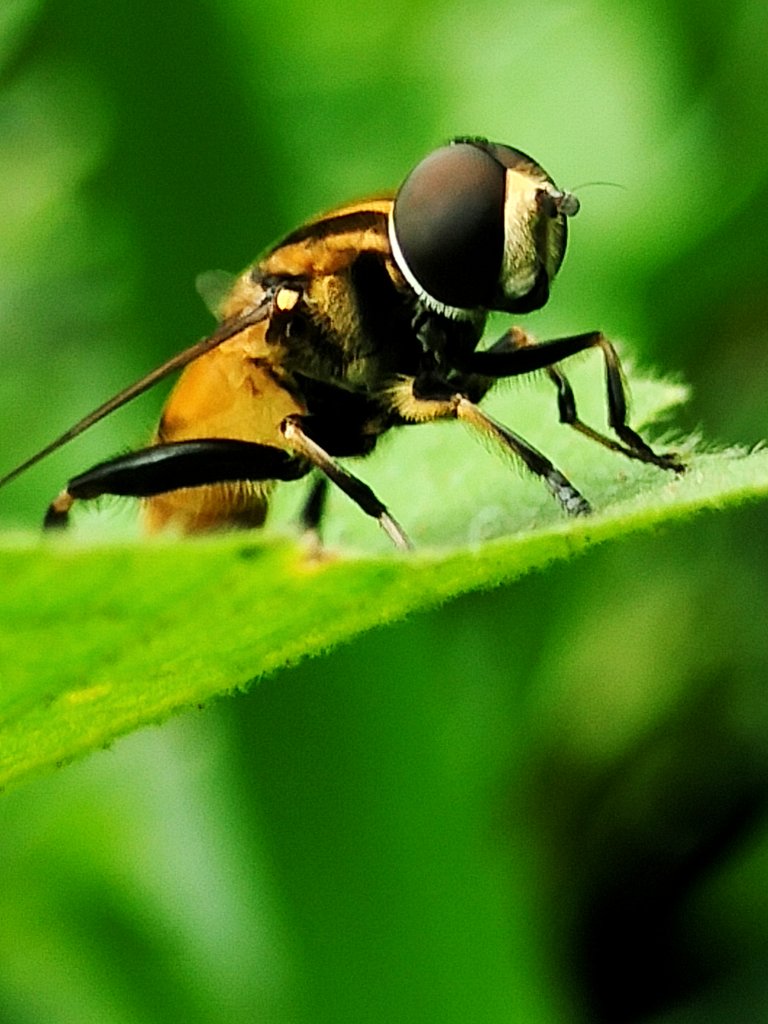
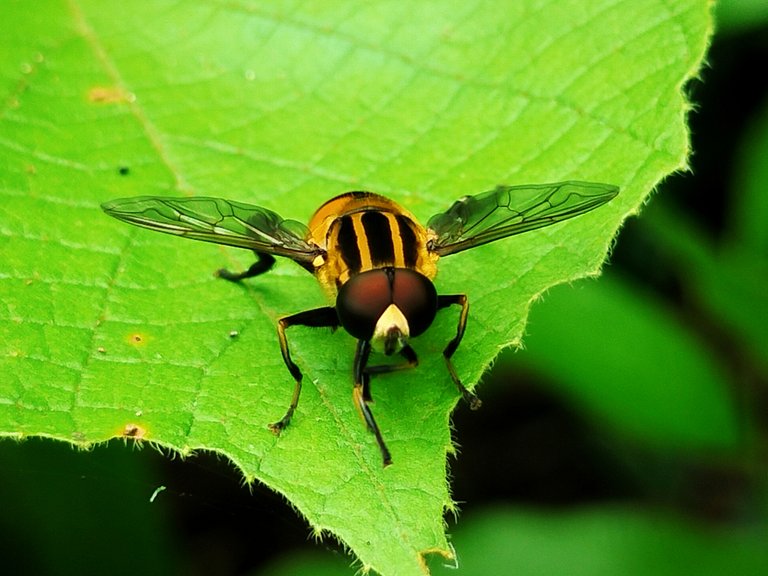
| Latin name | Helophilus hybridus |
|---|
| Observation date | 2 Feb, 2025 |
| Camera used | realme 7 Pro |
| Photographers | @reachdreams |
| Location | Aceh, Indonesia |
| Link to original community |
|---|
https://www.inaturalist.org/observations/260334402














